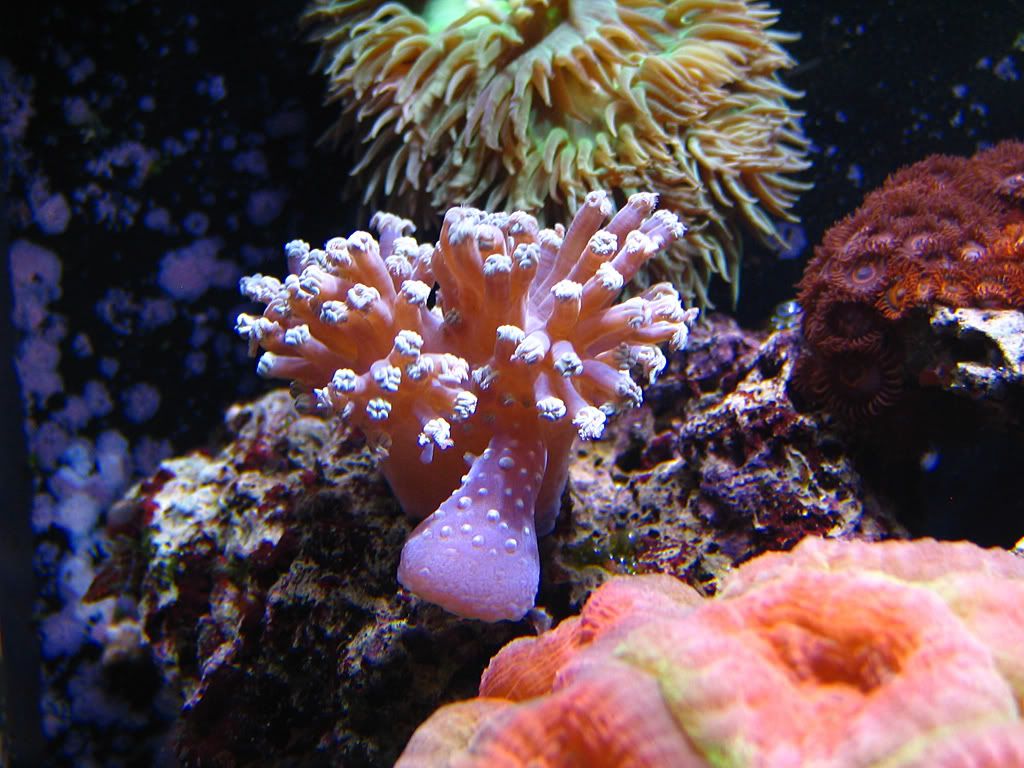Quote:
Originally posted by coralite
In coral morphology, stolons are reserve for describing corals which have retractile polyps. By definition, Xeniids have contractile polyps which cannot retract into the base. Most people who call this coral efflatournaria do so because that is what everybody else calls it. I like to think I was one of the first aquarist to have and identify a true effla over 4 yrs ago. I can tell you that it doesnt look like a giant cespitularia as this coral does.
|
question: has your "giant cespitularia" grown a foot/stolon/whatever like this

I see a few problems with what you're regurgitating from the books you've read (and what i'm about to state are just anecdotal, first hand eye-witness accounts, which, imo, are nothing less than tantamount to anything you read in a commercially available marine biology book (ie. books you can get from amazon and ebay, not graduate and Ph.D level texts)
1. Xeniids have many corals under that genus...and with regard to the retraction of the polyps....cespitularia and efflatounaria cannot retract their polyps fully into their base, as you noted....but other Xeniids DO have that ability, namely the (very) common red sea pink pulsing xenia and the seldomly available true Fiji pom-pom xenia.
2. You have it backwards....most people call this coral a cespitularia, (as you are, and even most of the people who responded to
my thread)...the ones who have ID'd it as an efflatounaria are few and far between....in fact, Sanjay (the lighting guy here on RC) and myself are the only two people who are almost 100% confident this is some obscure efflatounaria variant.
2. What do you have to counter the statement made by A. Calfo and others that cespitularia is typified by the fact, that, as a species, it has minute spicules of calcium carbonate embedded in the tissue, giving them the unmistakable iridescence/sparkle that makes them so sought-aftered. This coral, what you call a 'giant cespitularia', and what I call an efflatounaria, is devoid of
any spicules, from what I (and others can see).
Quote:
|
I like to think I was one of the first aquarist to have and identify a true effla over 4 yrs ago
|
I'm not sure what point you're trying to push across with that statement...if it's your coral ID'ing prowess, then yes, i'm impressed. But, FWIW, a "textbook" efflatounaria looks almost like a colt coral, but there are many, many morphs of efflas, which i believe is the one fact you're having a tough time swallowing.
Zach